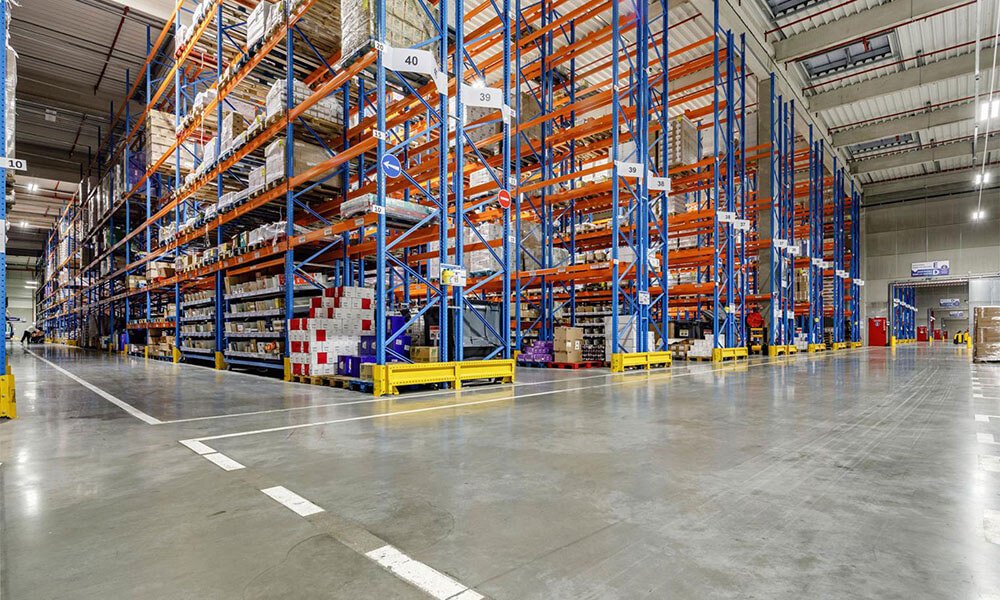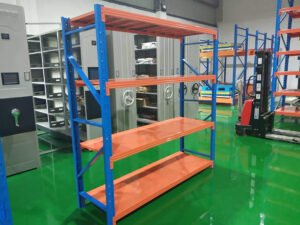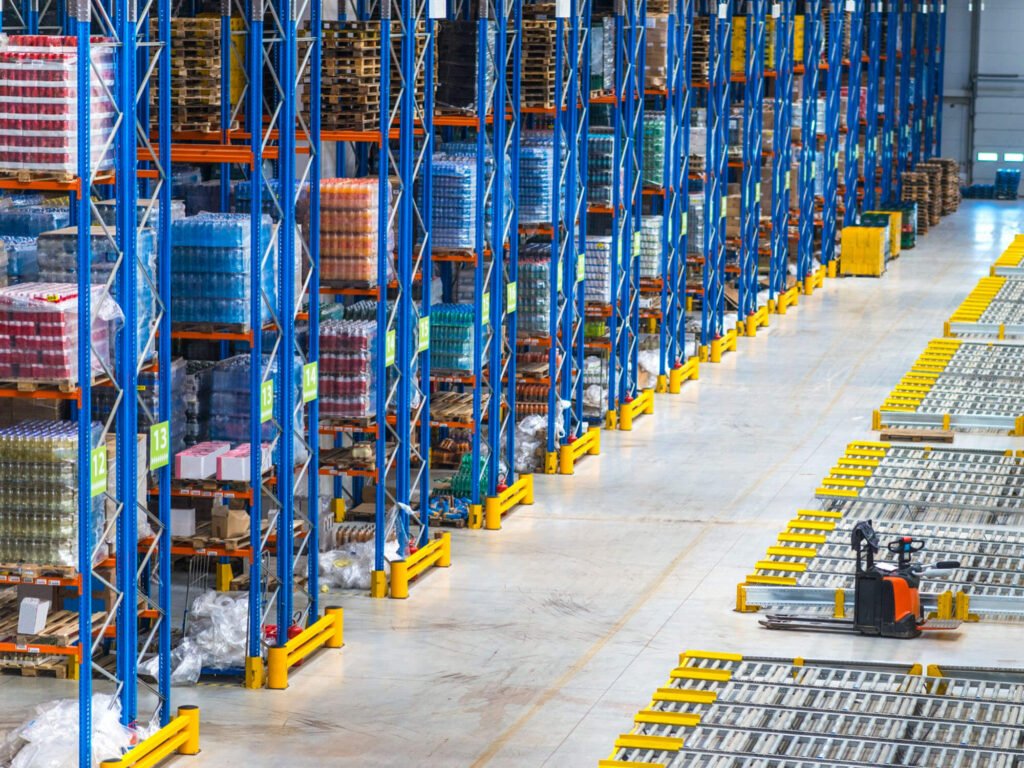You cannot deny the value of efficiency and space in todays age warehouse environment. The key challenges you face frequently includes inefficient operations and storage limitations. The conventional pallet racking emerges as an all rounder solution for optimum workflow and optimized spacings. Using conventional pallet racking you can improve vertical storage, organization, and get rid of downtimes. Deploying effective conventional pallet racking you need to understand layout, components, features, and more. This ultimate guide will help you with all relevant aspects. Keep reading to uncover how this system can improves your warehouse efficacy, and productivity.
What is Conventional Pallet Racking?
In short the conventional pallet racking system give you a direct access to any pallet you need. The conventional pallet racking employ rows of beams one over the other with aisles placed right between. Aisles allow pallet handling equipment (forklifts) to easily navigate and rotate stock conveniently. The main function of this type of racking is to assist you in organizing bulk inventory efficiently. You can access or store inventory without any hassle. For businesses prioritizing flexibility and order can use conventional pallet racking in warehouses.
Key Features and Benefits of Conventional Pallet Racking
1. Direct Access to Every Pallett
Conventional pallet racking allows for direct access to each pallet. You don’t need to move other pallets to get to the one you need. It shortens handling time, making operations easier. It also makes your warehouse more efficient, saving you time in your warehouse workflow.
2. Maximizes Storage Space
It can also be used for optimizing vertical and floor space. It takes full advantage of your warehouse’s height while keeping the floor neat and clean. You can also change the racking to accommodate your unique warehouse size and capacity needs. It gives you the flexibility to best utilize the available space.
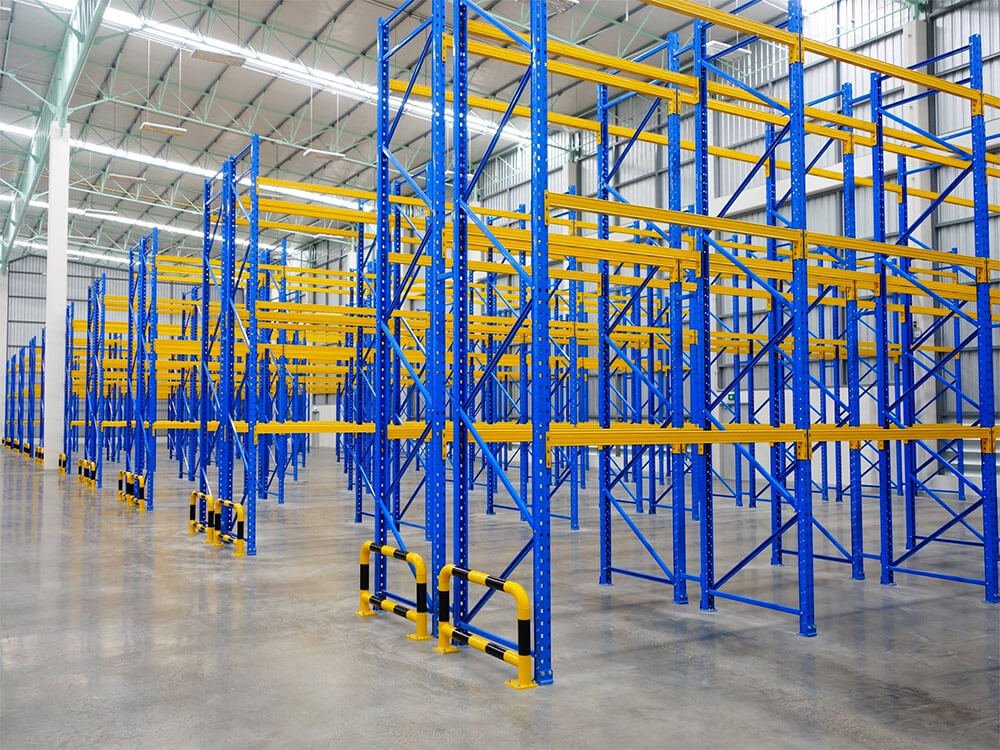
3. Versatile Compatibility
Conventional pallet racking can accommodate all pallet sizes from standard Europallets to custom built containers. It can be altered to allow heavier or larger items to be safely and efficiently stored. Its adaptability means it can suit a wide range of inventory requirements.
4. Improved Stock Control
Direct access to all the pallets allows you to better manage your inventory. It also makes it easier to keep tabs on the inventory and notice any overs and unders. This is a feature to help keep precise records and make inventory control easier.
5. Superior Warehouse Services
you have direct access to every pallet. This makes it easier to track stock levels and find discrepancies. This feature will assist you in keeping accurate records and also contribute towards keeping an overall stock control to help you manage your stock.
6. Superior Warehouse Services
Faster delivery times mean faster pallet retrieval. It enhances the service levels and throughput. Reduced errors and damage from handling ensures your products are always at their best. It is so that customers are satisfied and warehouse crew are more productive.
Ideal Warehouse Layout for Conventional Pallet Racking
Single Entry and Double Entry Rack Configurations
If you are planning your warehouse, consider single entry racks against the walls and double entry racks in the middle. This layout maximizes space and provides access to pallets. Double entry racks allow for access from both sides, increasing effciency.
Determination of Aisle Width and Rack Height
Aisle widths and rack heights should be designed in such a way that can be used for the handling equipment. Narrow aisles are necessary for narrow aisle trucks and wider aisles are required for forklifts. The rack height should be in accordance with your equipment’s lifting capacity and warehouse ceiling height.
Balancing Layout and Operational Requirements.
Your layout should suit your equipment and operations. Efficient aisle spacing to reduce travel time, and optimal rack heights to maximize vertical storage. It aligns these elements, making for productivity and smooth workflows.
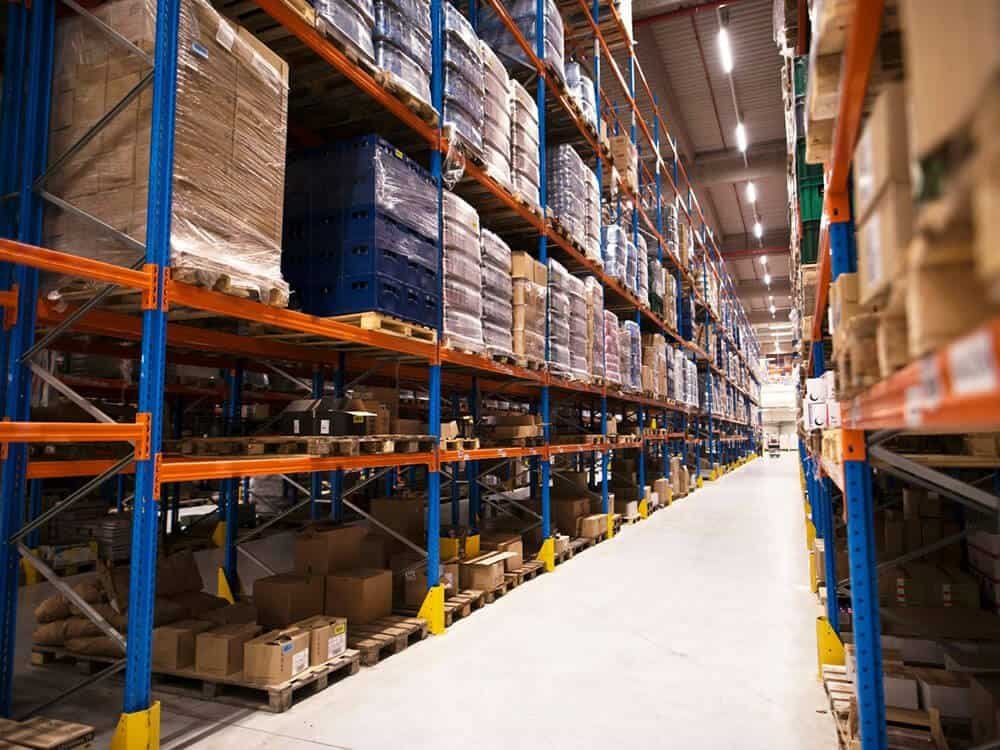
Commonly Used Material Handling Equipment for Conventional Pallet Racking
Conventional racking systems are efficient for material handling operations in managing pallets. Here’s a breakdown of what equipment is typically used.
Stacker: Stackers are versatile machines that can be used to lift and move pallets. This can be helpful in helping you maneuver tight spaces in your warehouse. These units are ideal for smaller scale operations and short distances within the racking system.
Counter-Balanced Forklift: Counter balanced against, forklifts are powerful and widely used. These are intended to help you move pallets quickly, to and from racking. They can stand heavy loads and are ideal for general purpose material handling.
VNA Man-Up Turret Truck: VNA man up turret trucks work very well in highly dense storage areas. These trucks raise lift operators to the rack level to place pallets precisely. For warehouses with inadequate walking space, they are indispensable.
Reach Truck: These are used for reaching high racks. Pallets are grabbed efficiently by being extended forward. For high density storage where space is limited, they are used.
VNA Man-Down Turret Truck: VNA man down turret trucks are another solution for tight aisles. Keeping the operator at ground level, they reach deep into racks. This will help you with their improved aisle access.
Automatic Trilateral: Pallets could be picked from three sides by automatic trilateral trucks. They actually help you work better and are useful for automated systems.
Stacker Crane: Stacker cranes are well suited for use in large warehouses. In high density storage applications, they are used to handle pallets with precision. They are designed for use in large scale automated operations.
Unit Loads: Pallets and Containers
For optimized storage solutions we need to know the types of pallets and containers. Each one affects how you will store and handle goods. But size and material matter as well, and they affect how efficient you are. If you choose the right option, it can save you a lot of time, and a lot of money.
Common Pallet Types
Europallets are the most popular option. The narrow side handling allows them to measure 800 x 1,200 mm with an 800 x 1,200 mm dimension. It is composed of nine blocks, three skids on the base. The designs ensure stability in transport and storage.
Perimeter Base Pallets
Europallets have two extra skids, just like perimeter base pallets. But these extra skids add to stability, especially with heavier loads. They’re ideal for industries that have secure stacking requirements.
Wire Containers
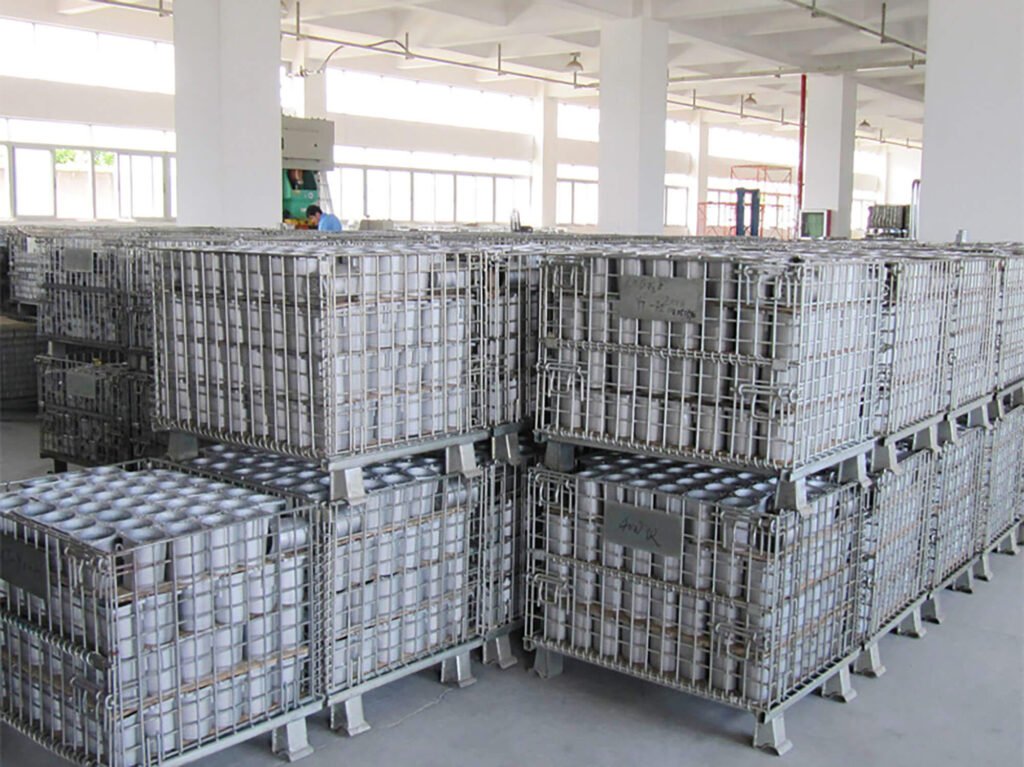
Metal containers are used by industries such as manufacturing and bulk storage. They fit well in conventional racking systems and are durable. Different sizes means you can require different amount of components to get good handling.
But there containers really shine in certain industries such as robust storage and transport solutions. For any heavy duty work particularly when the bulk materials are involved, they are a must have.
Components of Conventional Pallet Racking
Conventional pallet racking is the backbone of the warehouse from a storage perspective. It all comes down to each component, safety, stability and functionality. Here’s a breakdown of the key components and their functions:
1) Frame
Structural foundation of the frame is the basis of racking system. It also takes the whole weight of the stored items and it is connected to other parts like beams and anchor bolts. The frames are strong and sturdy so your system stays stable the whole time.
2) Beam
They are held on beams for overall stability. These horizontally connect between frames and carry weight of goods stored within them. I need to choose the right beam size so I don’t over load.
3) Safety Locking Mechanism
Safety locking mechanisms keep the beams secure to the frame. They prevent the accidental dislodgement or collapse when being loaded and unloaded. We need them to protect workers and inventory.
4) Row Spacer
Row spacers are enough to keep racks separate. This uniform alignment helps to improve stability of the system and increase accessibility. Especially in multi row setups spacers are helpful.
5) Anchor Bolts
Anchor bolts secure the frame to the floor. They prevent shifting owing to heavy loads or accidental impacts. Proper installation of anchor bolts is critical for its long term durability though.
6) Levelling Shims
Levelling of the frame to offset uneven floors is achieved with shims. The system is kept in balance and prevented from instability by them. Floor irregularities always check and correct.
7) Upright Protector
They are also upright protectors, protecting racking uprights from forklift damage. At the base of the frame, and intended to absorb impacts. However, these protectors can also help to extend the life of your racking system.
8) Lateral Protection Barrier
Lateral protection barriers prevent pallets from falling sideways. Especially in high traffic areas it safeguards workers and inventory. In addition, these barriers help store items be organized.
9) Cross Bracing Set
This cross bracing gives some structural stability to the racking system. This then runs across the uprights connecting diagonally to reduce sway. It is required to support heavy loads.
10) Top Portal Tie
The top portal ties join the top sections of the frames together. They strengthen the system in tall racking setups. Portal ties are required for seismic or dynamic load handling.
11) Pallet Support Bar
The pallet support bars support the base of pallets on each beam level. They help distribute the weight, preventing pallets from sagging. They are a good option for heavier loads.
12) Container Support Bar
The support bars for the container are contained within the enclosure. They are often used because they are particularly useful for nonstandard pallet sizes or shapes.
13) Chipboard Deck Support
Chipboard deck supports hold flat items or containers. They are suitable for lighter applications and are a versatile storage solution.
14) A shelf made of chipboard or melamine
For lighter to medium duty storage, chipboard or melamine shelves are ideal. They provide a flat surface for small or loose items.
15) Galvanized Picking Shelf Panel
Galvanized picking shelf panels that are corrosion and wear resistant. This is an ideal surface for heavy use areas that need to be durable.
16) Mesh Shelf
Wire mesh shelves allow for ventilation and are visible. They’re lightweight and ideal for stuff that needs to breathe.
17) Drum Support
The drum supports securely holds cylindrical containers or drums. They provide a secure and stable base for irregularly shaped objects.
18) Back Stop Rails
Back stop rails help prevent pallets from rolling off the back of the rack. These rails also prevent the items from falling off and keep them in place.
19) Fall Protection Mesh Guarding
Items are prevented from falling off the racking by mesh guarding. The operation is safer and there is a lower risk of injury or damage.
20) Raised Pallet Support Bar
Certain pallet types have clearance, which is raised to provide support bars for pallets. This streamlines the handling of pallets with unique design.
21) Aisle Identification Plate
This will aid you in owning a row of specific pallets. Clear labeled makes organization easier and retrieval faster.
22) Loading Sign
Loading signs display weight limits and loading instructions. They help avoid overloading accidents and ensure safe usage.
Choosing the Right Conventional Pallet Racking System
- Make sure the racking system fits your available space. Consider the layout to ensure efficient workflow and accessibility
- Check the type of handling equipment you use, like forklifts or pallet jacks. Ensure the racking system matches the equipment’s specifications
- Consider the weight and dimensions of the pallets being stored. Choose a system designed to handle the load effectively and safely
- Understand how quickly inventory moves. If your method is FIFO or LIFO choose a method that supports these methods.
- Pick a system which can be configured to suit your specific store needs.
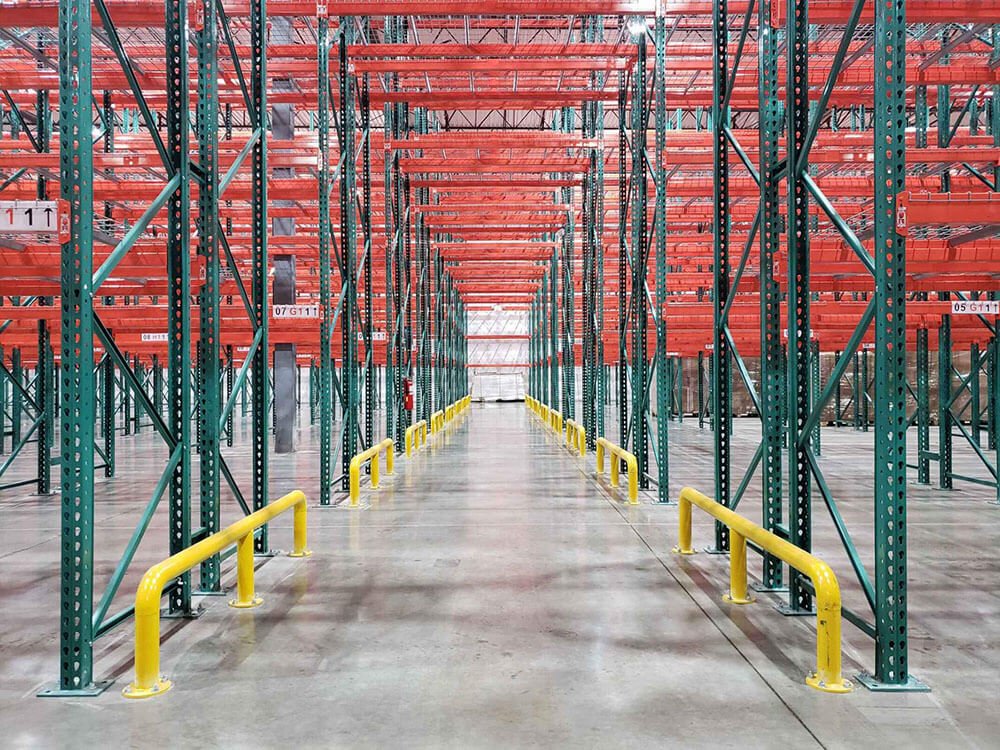
Safety Considerations in Conventional Pallet Racking Systems
- Train all fork lift operators and staff dealing with the racking system properly. To maneuver safely and to avoid crashing into racks, you must know how.
- Regular maintenance and inspections are essential to keep the racking system in optimal condition. You should inspect racks for damage or signs of wear to prevent accidents and protect your team.
- Implement safety locking mechanisms on the racks. This prevents accidental dislodging or tipping of pallets. You need to make sure these mechanisms are checked regularly.
- Proper weight distribution is key to stability. Make sure pallets are placed and stacked properly and are evenly. The load is uneven and may tip or collapse the rack.
- Do not overload racks more than the rated capacity.nd staff handling the racking system. You must understand how to maneuver safely and avoid collisions with racks.
Emerging Trends in Conventional Pallet Racking
- Warehouse Management Systems Integration: WMS can now seamlessly merge with racking systems. It makes the overall efficiency better and provides better inventory tracking.
- Automation-ready conventional racking systems: The design of racking systems considers automation. This enables them to assist robotic systems and automated guided vehicles (AGVs) to simplify their operations.
- Use of advanced materials for durability and weight optimization: New materials are being used to make racking systems stronger and lighter. It helps save costs by preventing wear and tear and by improving load handling.
- Eco-friendly and sustainable designs: Sustainability is key. Manufacturers are creating eco friendly designs that use recycled materials and save energy. They help you achieve a greener operation and meet some sustainability goals.
Conclusion
According to the above, conventional pallet racking is a requisite tool for warehouse space optimization and better operations. Because it has direct access to each pallet, it handles different pallet sizes, and can be used to maximize vertical storage, it is a versatile, effective system for a wide variety of types of inventory needs. Warehouses can improve productivity and safety with the appropriate layout, components, and material handling equipment. Furthermore, there are growing trends such as automation integration and eco friendly designs that will bring more benefits to the future warehouse operations. Nevertheless, conventional pallet racking can, with appropriate training and maintenance, largely enhance the performance and growth of your warehouse.

